It looks like you're using an Ad Blocker.
Please white-list or disable AboveTopSecret.com in your ad-blocking tool.
Thank you.
Some features of ATS will be disabled while you continue to use an ad-blocker.
15
share:
Here are some samples of 40's to 60's advertisings related to flying saucers.
Interesting how the classic flying saucer shape was common. I guess that nowadays, such advertisings will mainly use a triangle shape.
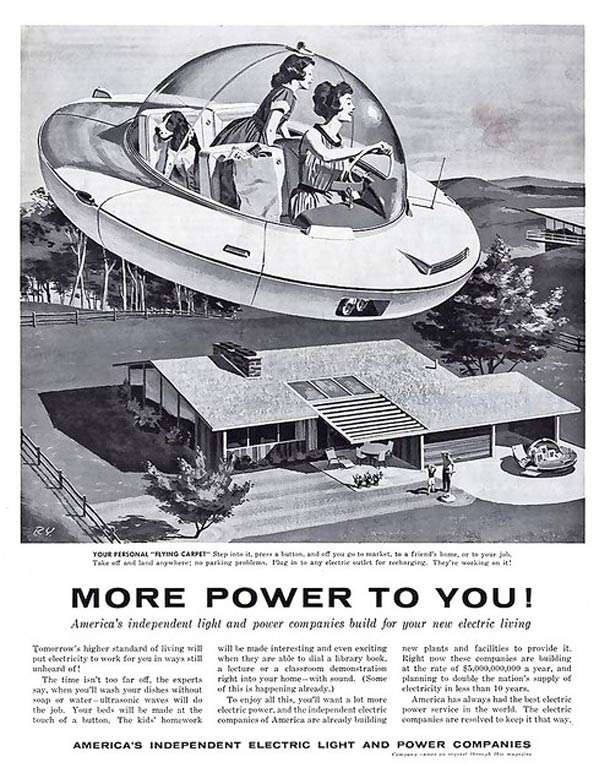

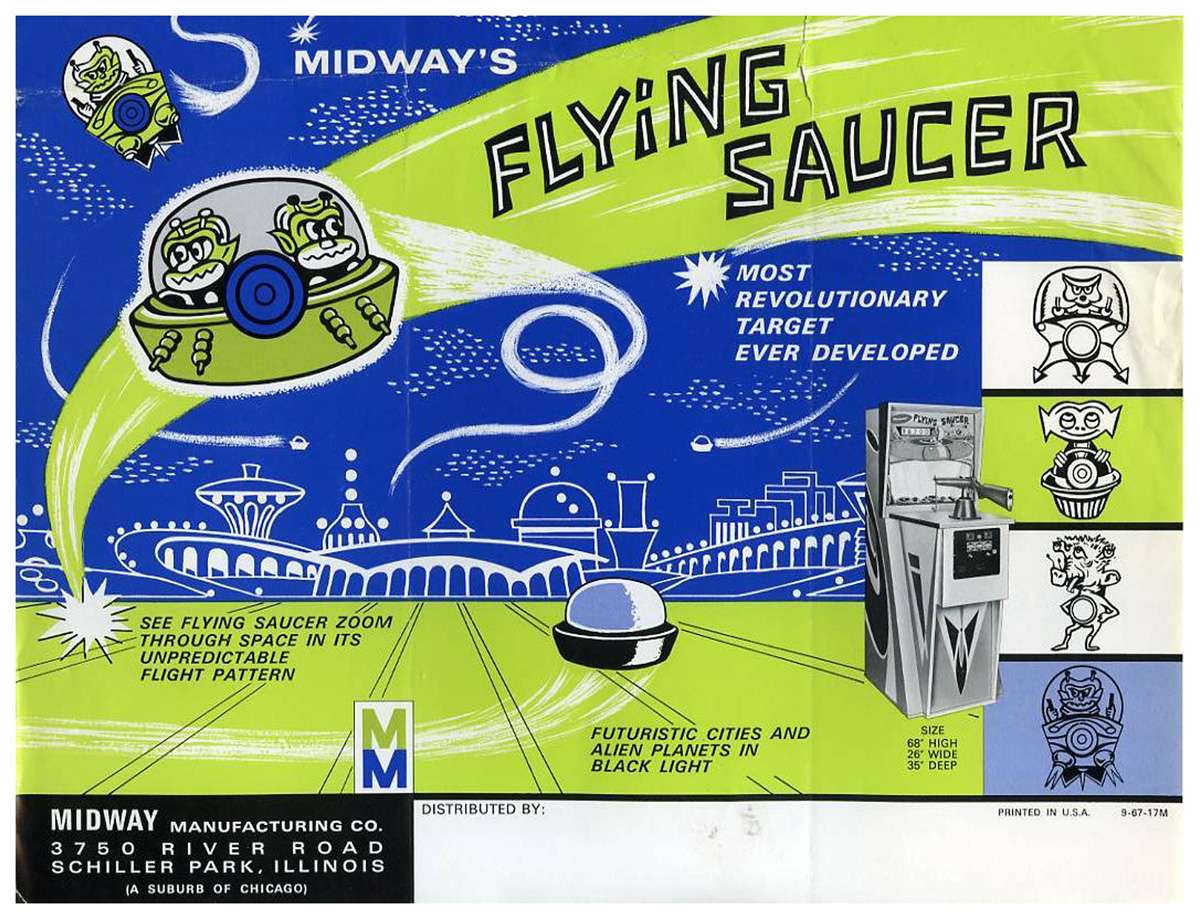

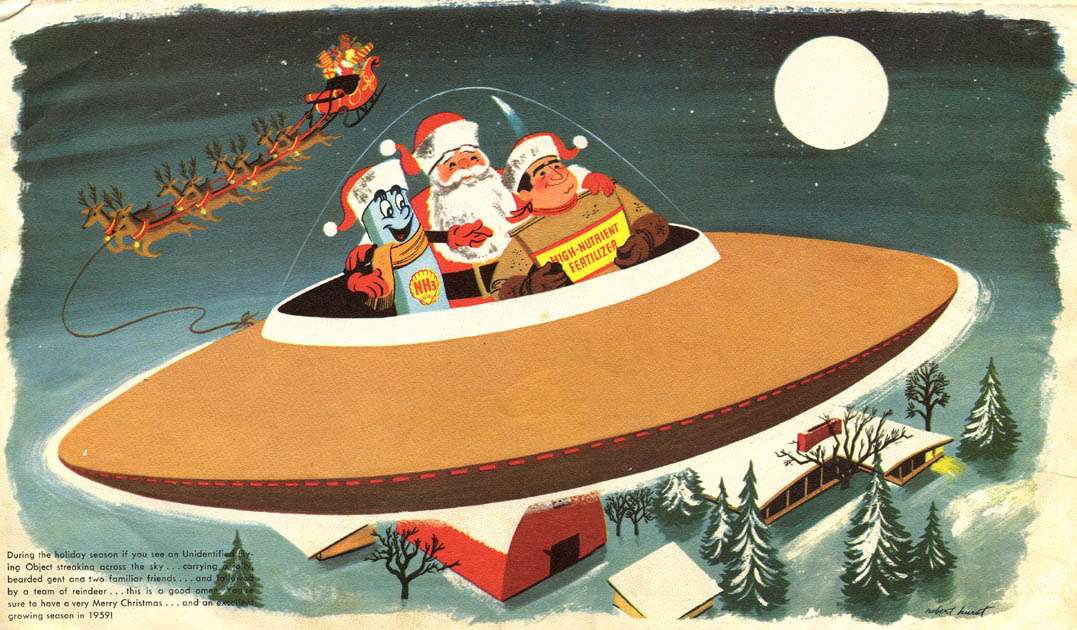
Do you have some other to share?
Interesting how the classic flying saucer shape was common. I guess that nowadays, such advertisings will mainly use a triangle shape.





Do you have some other to share?
For some reason, I now can't get The Jetsons theme song out of my head
♫♪ Meet George Jetson... ♪♫
♫♪ Meet George Jetson... ♪♫
reply to post by elevenaugust
Always found this one funny
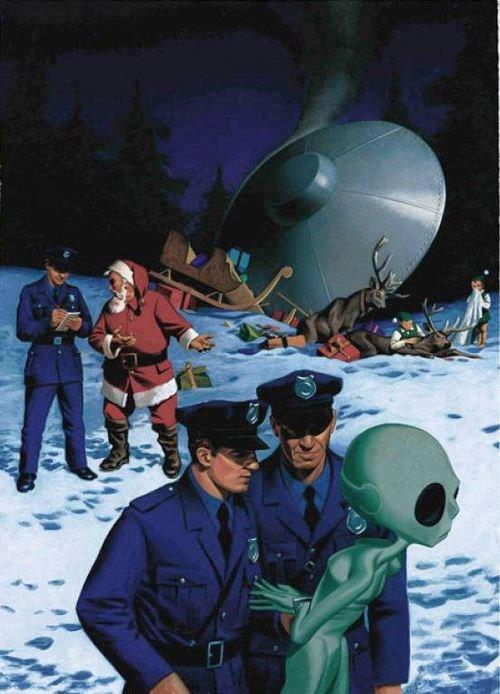
Tough call, who's more real, Santa or aliens? With the amount of documents, witnesses and radar reports, I call aliens, sorry kids
Always found this one funny

Tough call, who's more real, Santa or aliens? With the amount of documents, witnesses and radar reports, I call aliens, sorry kids
reply to post by elevenaugust
I have some you might like.
The following pictures are all from Klaus Buergle, a German artist, they where all made in the 50's.
He illustrated a magazine called "The New Universe" back then.
I absolutely adore his paintings/pictures.
It's not exactly advertising though.
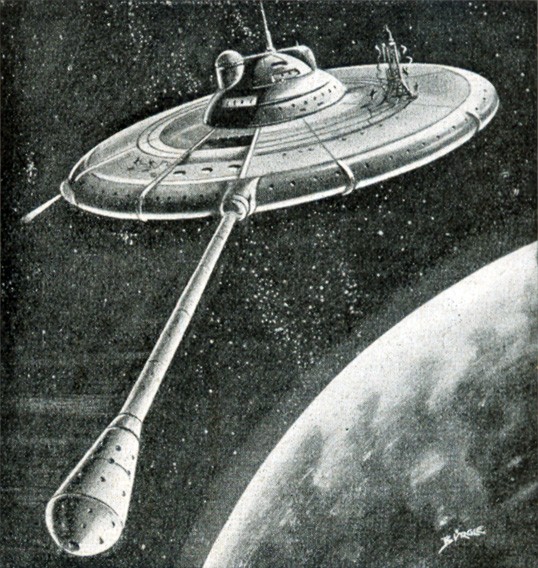
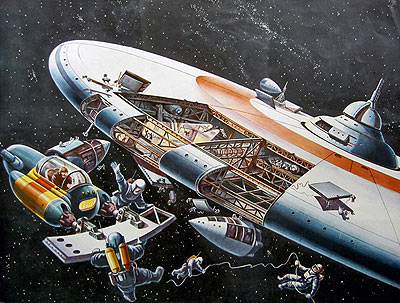
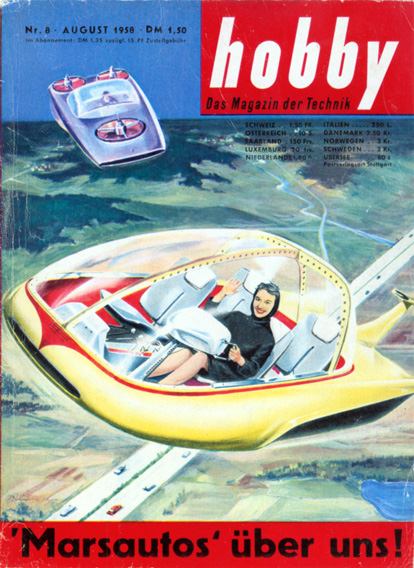
"Future of traffic":
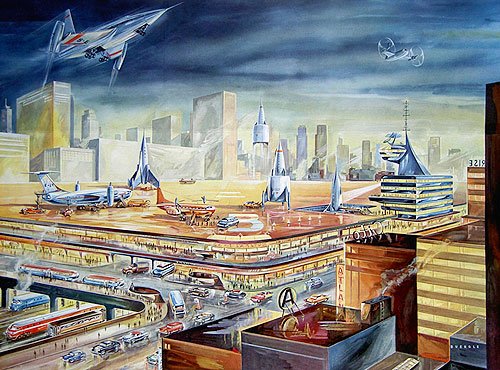
this one is "First Contact", no saucers but still a mindblowing beauty:
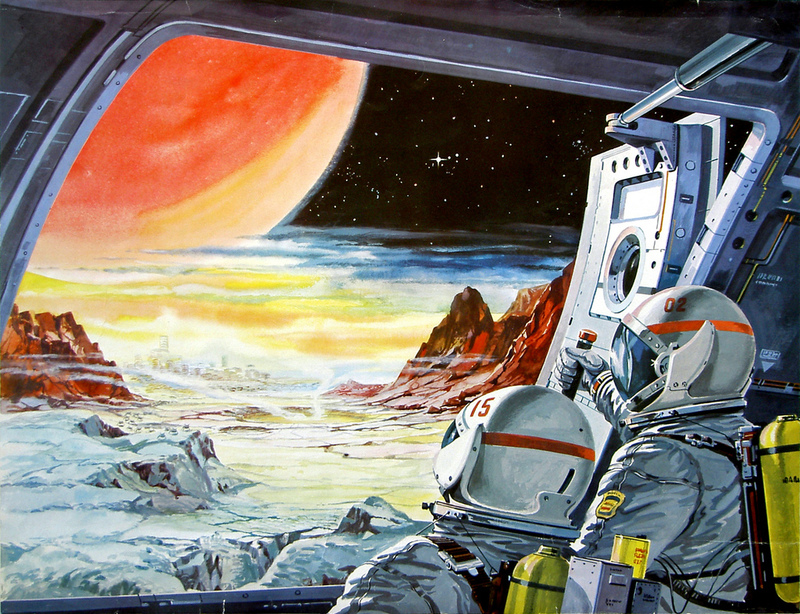
Hope you enjoyed
I have some you might like.
The following pictures are all from Klaus Buergle, a German artist, they where all made in the 50's.
He illustrated a magazine called "The New Universe" back then.
I absolutely adore his paintings/pictures.
It's not exactly advertising though.



"Future of traffic":

this one is "First Contact", no saucers but still a mindblowing beauty:

Hope you enjoyed
I love these old illustrations and especially so as the artists had so much free reign and much less cultural baggage than they have now. I mean,
whenever an artist has to imagine a futuristic space-craft or aircraft they have to try and avoid repeating previous concepts. That's probably why
the saucer has fallen into obscurity on book covers and in comics. Back then, they could just redesign variations on anything disc-like.
At the same time, it encourages questions about whether art reflects life or life reflects art?
Late '40s and especially the '50s saw flying saucers becoming iconic due to the reports of sightings - think 'saucers,' think 1950s.
The artwork was arguably fuelled by the western cultural saturation of UFOs in the media and the way they came to be characterised by the 'Flying Saucer' motif.
So yeah, saucer artwork was inspired by actual reported descriptions of saucers. Nevertheless, it's rarely so phenomenal and we find excellent saucer illustrations way before Arnold made his claims.
A couple of years ago I was wondering why fiction and hoaxes precede reality? I'd like to rewrite that thread as it didn't do the subject justice - a near miss. Since then, I've found it an enticing avenue of thought that human creativity has a reciprocating relationship with what is called the paranormal or 'the phenomena.'
At the same time, it encourages questions about whether art reflects life or life reflects art?
Late '40s and especially the '50s saw flying saucers becoming iconic due to the reports of sightings - think 'saucers,' think 1950s.
The artwork was arguably fuelled by the western cultural saturation of UFOs in the media and the way they came to be characterised by the 'Flying Saucer' motif.
So yeah, saucer artwork was inspired by actual reported descriptions of saucers. Nevertheless, it's rarely so phenomenal and we find excellent saucer illustrations way before Arnold made his claims.
A couple of years ago I was wondering why fiction and hoaxes precede reality? I'd like to rewrite that thread as it didn't do the subject justice - a near miss. Since then, I've found it an enticing avenue of thought that human creativity has a reciprocating relationship with what is called the paranormal or 'the phenomena.'
Originally posted by Kandinsky
I love these old illustrations and especially so as the artists had so much free reign and much less cultural baggage than they have now. I mean, whenever an artist has to imagine a futuristic space-craft or aircraft they have to try and avoid repeating previous concepts. That's probably why the saucer has fallen into obscurity on book covers and in comics. Back then, they could just redesign variations on anything disc-like.
At the same time, it encourages questions about whether art reflects life or life reflects art?
Late '40s and especially the '50s saw flying saucers becoming iconic due to the reports of sightings - think 'saucers,' think 1950s.
The artwork was arguably fuelled by the western cultural saturation of UFOs in the media and the way they came to be characterised by the 'Flying Saucer' motif.
So yeah, saucer artwork was inspired by actual reported descriptions of saucers. Nevertheless, it's rarely so phenomenal and we find excellent saucer illustrations way before Arnold made his claims.
A couple of years ago I was wondering why fiction and hoaxes precede reality? I'd like to rewrite that thread as it didn't do the subject justice - a near miss. Since then, I've found it an enticing avenue of thought that human creativity has a reciprocating relationship with what is called the paranormal or 'the phenomena.'
I never looked from the point of view that Kenneth Arnold's sighting was anything other than a real anomaly he was witness to. His drawing was of a flying wing, nothing more and nothing less and they had been around in the US in some form as early as 1940 and earlier, and flying under power in at least 1946, but they were still secret in 1947 I'm sure you'll know about them anyway.
I like these old pics though, certainly they spurred many's an imagination.
I guess too, that something like the Jetson's runabout could eventually have been made much cheaper than our horrendously expensive four wheel land vehicles.
edit on 20-5-2013 by smurfy because: Text.
reply to post by Kandinsky
In case you missed it mate, this is a pretty good thread from mirageman on that very topic www.abovetopsecret.com...
Amazing to think that even before the 1900s people were obsessed with space and the likes of Mars as home to aliens. Although I probably can't prove it, I'd like to think there was something legitimate behind the collective thinking back then
In case you missed it mate, this is a pretty good thread from mirageman on that very topic www.abovetopsecret.com...
Amazing to think that even before the 1900s people were obsessed with space and the likes of Mars as home to aliens. Although I probably can't prove it, I'd like to think there was something legitimate behind the collective thinking back then
reply to post by smurfy
I think you'll find that Kenneth Arnold's actual drawing is nothing like a flying wing, however you will find pictures of him holding an illustration like a flying wing and somewhere there is a quote where he stated that illustration wasn't anything like what he saw.
The two can be seen here, Arnolds drawing remarkably similar to the July 7 1947 photo here.
Also Arnold stated that only one of the 9 objects he sighted was crescent shaped, the others being full discs.
I think you'll find that Kenneth Arnold's actual drawing is nothing like a flying wing, however you will find pictures of him holding an illustration like a flying wing and somewhere there is a quote where he stated that illustration wasn't anything like what he saw.
The two can be seen here, Arnolds drawing remarkably similar to the July 7 1947 photo here.
Also Arnold stated that only one of the 9 objects he sighted was crescent shaped, the others being full discs.
edit on 21-5-2013 by chunder because: To add 2nd link
edit on 21-5-2013 by chunder because: Add final sentence
reply to post by elevenaugust
Even the folks at NASA were thinking about the saucer shape ...
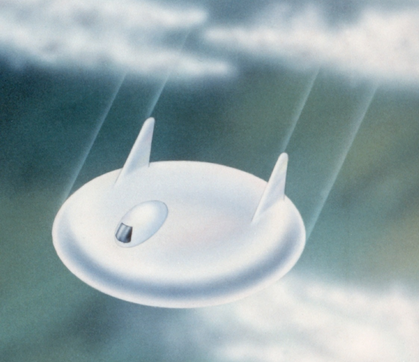
Link - www.dfrc.nasa.gov...
Interesting how the classic flying saucer shape was common.
Even the folks at NASA were thinking about the saucer shape ...

Link - www.dfrc.nasa.gov...
reply to post by chunder
his exact words describing the objects (plural) were:
"half-moon shaped, oval in front and convex in the rear, something like a pie plate that was cut in half with a sort of a convex triangle in the rear." He also said "Saucer-like", "disk", and "pie-pan", as in "flat like a pie-pan and somewhat bat-shaped".
He also said they moved erratically like the tail of a kite, and were 'like a fish flipping in the sun."
his exact words describing the objects (plural) were:
"half-moon shaped, oval in front and convex in the rear, something like a pie plate that was cut in half with a sort of a convex triangle in the rear." He also said "Saucer-like", "disk", and "pie-pan", as in "flat like a pie-pan and somewhat bat-shaped".
He also said they moved erratically like the tail of a kite, and were 'like a fish flipping in the sun."
reply to post by Kandinsky
I'm not sure if I understand you correctly,I feel the correct translation for "reciprocating" is probably missing in my dicts in this case.
If you mean they might influence each other, I'm absolutely positive they do.
Phenomena and arts, both leave huge impressions on our minds, and therefore they actually must have an influence on each other I believe.
Art reflects what's on the Artists mind, and can in return have an influence on what we believe to see.
Ufo sightings allegedly tend to spike in times when movies, real cornerstone productions, are around.
No, not claiming all spikes are related to movies
And the brain always has the need to make sense out of everything we see, but it can only fill in gaps with familiar things. It will try at least.
I think it's inevitable they impact on each other.
Originally posted by Kandinsky
...
Since then, I've found it an enticing avenue of thought that human creativity has a reciprocating relationship with what is called the paranormal or 'the phenomena.'
I'm not sure if I understand you correctly,I feel the correct translation for "reciprocating" is probably missing in my dicts in this case.
If you mean they might influence each other, I'm absolutely positive they do.
Phenomena and arts, both leave huge impressions on our minds, and therefore they actually must have an influence on each other I believe.
Art reflects what's on the Artists mind, and can in return have an influence on what we believe to see.
Ufo sightings allegedly tend to spike in times when movies, real cornerstone productions, are around.
No, not claiming all spikes are related to movies
And the brain always has the need to make sense out of everything we see, but it can only fill in gaps with familiar things. It will try at least.
I think it's inevitable they impact on each other.
edit on 21-5-2013 by derpif because: (no reason given)
I don't know what year this is from, but it looks pretty old to me, a helium-inflatable frisbee.

And STP had a magazine ad in '62 showing a silver '55 Chevy, a sliver '62 Impala Supersport, and a flying saucer, all in side view, one of their many cute ads, but lots of luck trying to find a scan of that one online today.

And STP had a magazine ad in '62 showing a silver '55 Chevy, a sliver '62 Impala Supersport, and a flying saucer, all in side view, one of their many cute ads, but lots of luck trying to find a scan of that one online today.
edit on 21-5-2013 by xpoq47 because: (no reason given)
new topics
-
Drones On Live Beach Cam New Jersey.
Aliens and UFOs: 1 hours ago -
Christmas Dinner ??
Food and Cooking: 2 hours ago -
Merry Christmas !!
General Chit Chat: 5 hours ago
top topics
-
This is an interesting picture. Do we actually pick our leaders?
Politicians & People: 16 hours ago, 11 flags -
Merry Christmas !!
General Chit Chat: 5 hours ago, 9 flags -
U.S. Govt Agencies That Protect Criminals in Government - National Archives Records Admin-NARA.
Political Conspiracies: 17 hours ago, 8 flags -
Christmas Dinner ??
Food and Cooking: 2 hours ago, 3 flags -
Drones On Live Beach Cam New Jersey.
Aliens and UFOs: 1 hours ago, 3 flags
active topics
-
Drones On Live Beach Cam New Jersey.
Aliens and UFOs • 1 • : WeMustCare -
UnitedHealthcare CEO Brian Thompson shot dead in Midtown Manhattan, masked gunman at large
Other Current Events • 176 • : WeMustCare -
Spiritual Solstice
Short Stories • 17 • : SprocketUK -
This is an interesting picture. Do we actually pick our leaders?
Politicians & People • 10 • : montybd -
Merry Christmas !!
General Chit Chat • 11 • : elevatedone -
Trump says ownership of Greenland 'is an absolute necessity'
Other Current Events • 33 • : fringeofthefringe -
Christmas Dinner ??
Food and Cooking • 1 • : Naftalin -
Panamanian President-“every square meter” of the Panama Canal belongs to Panama.
New World Order • 39 • : RottenRandy -
Post A Funny (T&C Friendly) Pic Part IV: The LOL awakens!
General Chit Chat • 7948 • : baddmove -
F-18 shot down over Red Sea....by our own Destroyer?
Other Current Events • 17 • : matafuchs
15
